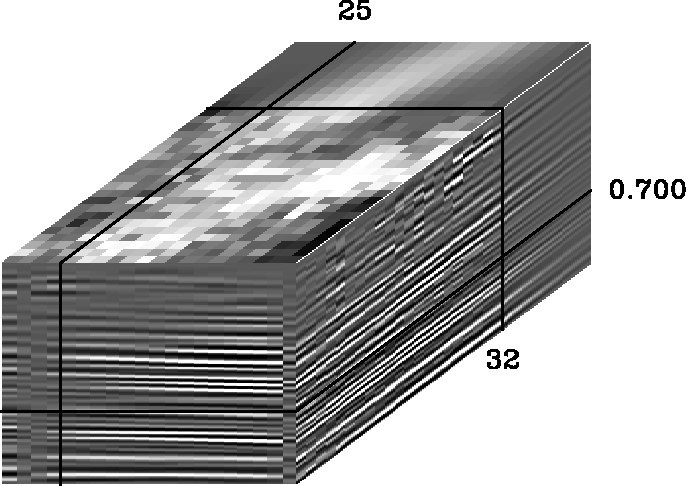 |
Figure 1 The original dataset. The front panel is blank because the data at the back of the cube has been zeroed.
There is a fundamental difference between the vertical and horizontal directions in seismic data. In the vertical direction, whether in time or depth, the data are expected to be unpredictable. Predictability implies either a multiple sequence or an uncollapsed source wavelet. In the horizontal directions data are expected to be predictable, and signal in seismic data is recognized by its lateral continuity. This lack of symmetry between the horizontal and vertical directions is caused by the leveling effect of gravity on sedimentary sequences.
Because of this difference, when extrapolating seismic data we expect to be able to predict laterally well and to predict vertically poorly, if at all. This directional dependence of predictability places limits on the configurations of the windows in which predictions are made. It also suggests that filters allowing vertical predictions should not be used.
In practice, a filter allowing vertical predictions does make some vertical predictions because of the band-limited nature of the data. Adjacent samples generally have comparable amplitudes, producing a significant prediction. This prediction is not especially useful for data extrapolation since it covers such a short time span. These short-term vertical predictions weaken the desired lateral predictions. A two-dimensional example of an operator allowing vertical predictions is shown in Figure 2, and an example of a purely lateral two-dimensional operator is shown in Figure 3. The original data is shown in Figure 1. The process with a purely lateral filter extrapolates the data farther than the same process with a filter that allows vertical predictions. I postulate that this difference in lateral extent is caused by the short-term vertical predictions weakening the lateral predictions.
 |
 |
 |
A troublesome failure of this technique can be seen in the front face of the cubes in Figures 2 and 3. The traces near the edge of the volume do not appear to follow the trend of the data. In other cases, these bad traces may even have polarities opposite to that of the nearby traces. While this effect is not completely understood, it appears to be confined to the areas where the traces lie between the edge of the data and the output point of the filter. The elimination of this effect is the subject of the next section.